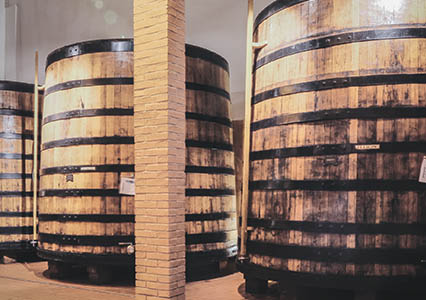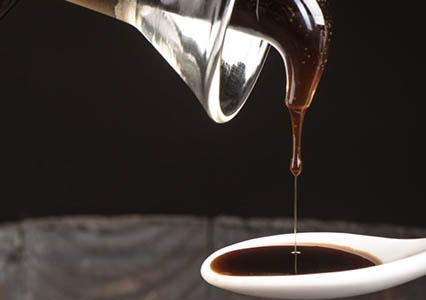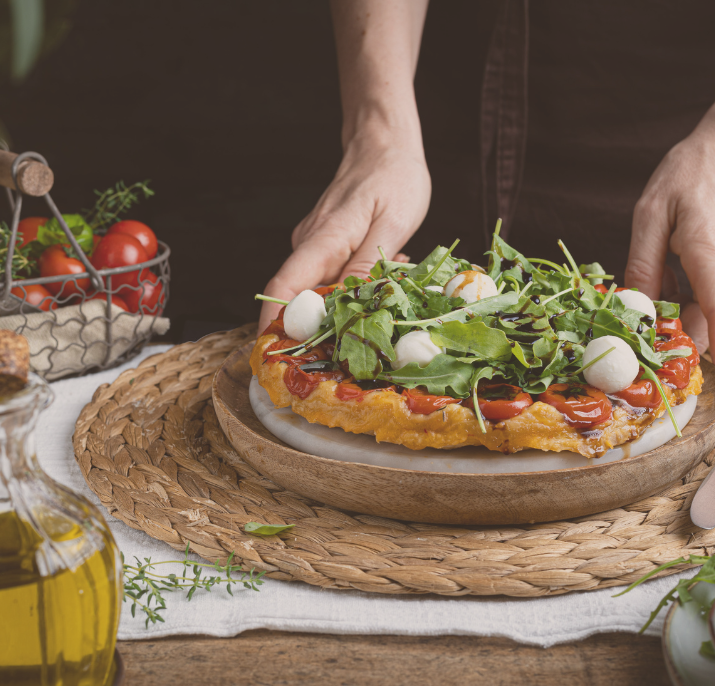Balsamic Tasting: A Guide to Organoleptic Analysis
Balsamic vinegar is a true gem of Emilia’s gastronomic tradition, capable of enchanting the palate and enriching any dish with its complexity and charm. This delicacy, sometimes called “black gold,” is the result of centuries-old artistry that combines top-quality ingredients with meticulous craftsmanship. Tasting this vinegar is a sensory journey that unveils Modena’s culinary traditions and invites you to explore its many nuances.
In this guide, we’ll discover how to fully appreciate balsamic vinegar through a detailed organoleptic analysis.
The Difference Between Traditional Balsamic Vinegar of Modena PDO and Balsamic Vinegar of Modena PGI
Before diving into a balsamic vinegar tasting, it’s essential to distinguish between Traditional Balsamic Vinegar of Modena PDO and Balsamic Vinegar of Modena PGI. Both represent gastronomic excellence, but they differ in characteristics and production methods.
Traditional Balsamic Vinegar of Modena PDO (Protected Designation of Origin) is a premium product made exclusively from grapes of specific varieties, including Lambrusco and Trebbiano. Produced in small quantities, it follows strict regulations requiring a minimum aging of 12 years in wooden barrels made from different woods such as oak, chestnut, and cherry. During this long process, the cooked grape must, with no additives, concentrates and develops a rich, complex organoleptic profile. The result is a dense balsamic vinegar, intensely fragrant, with a harmonious balance of sweetness and acidity—perfect for gourmet dishes or to enjoy on its own.
Balsamic Vinegar of Modena PGI (Protected Geographical Indication) also comes from a defined area but follows different production rules. It is made from grape must and wine vinegar, aged for at least 60 days and up to 3 years for the “aged” version. Thanks to this process, PGI balsamic vinegar is more accessible and versatile, with a delicate and straightforward flavor. It is widely used in cooking to dress salads, marinate meats, or enrich warm dishes, making it ideal for everyday use.
In short, choosing between PDO and PGI depends on your personal preferences, intended use, and budget. Factors such as the producer’s expertise and the quality of raw materials can also influence your decision. For this reason, historic companies like De Nigris, active since 1899, guarantee excellence in both categories.
De Nigris offers a range of PGI balsamic vinegars with different densities to meet diverse culinary needs, as well as PDO Traditional Balsamic Vinegar of Modena, available in 12- and 25-year-aged versions that deliver exceptional depth and complexity of flavor.
Understanding these differences allows you to fully appreciate the quality and uniqueness of both balsamic varieties, enriching your tasting experience.
Preparing for a Balsamic Tasting
To fully immerse yourself in a balsamic tasting, proper preparation is key. Serve balsamic vinegar at room temperature to enhance its aromas. Use a small liqueur glass, or even better, a ceramic tasting spoon—since metal could compromise the flavor by altering its delicate aromatic notes.
Pour a few drops of balsamic vinegar into a glass and allow it to breathe. This process is essential to release the vinegar’s rich, complex bouquet, allowing its scents and flavors to emerge fully. Oxygenation creates the ideal conditions for in-depth organoleptic analysis, highlighting the sweet and acidic notes that define this unique product.
Visual Examination
The first step in assessing balsamic vinegar is visual analysis. Observe its density and color carefully. A high-quality balsamic vinegar should have a velvety texture and an intense hue, ranging from glossy dark brown to deeper shades. This color reflects careful aging in batteries of different wooden barrels, which impart the product’s distinctive character. Brightness and clarity are additional signs of balanced acidity and excellent craftsmanship.
Olfactory Examination
Next comes the olfactory analysis, fundamental for understanding balsamic vinegar’s aromatic complexity. Bring the glass or spoon close to your nose and inhale deeply. The first impression will be a layered, rich fragrance with notes of wood, ripe fruit, and subtle spicy undertones. Each inhalation reveals a new dimension, promising flavors that will unfold during the tasting stage. Pay attention to the different nuances: the aroma often evokes memories and sensations tied to Modena’s heritage.
Gustatory Examination
Now, it’s time to taste. Sip a small amount of balsamic vinegar, letting it spread slowly in your mouth. The tasting begins with a sweet impact, immediately followed by a pleasant acidity that perfectly balances the initial sweetness. The flavor is round and harmonious, with notes of plum and cherry blending into a delicate embrace. You may also notice subtle hints of spices and wood, lingering elegantly and enriching the overall experience. This balance of sweetness and acidity is what makes balsamic vinegar a rare and precious condiment.
Storing Balsamic Vinegar Properly
Proper storage is essential to preserve balsamic vinegar’s organoleptic qualities and ensure an optimal tasting experience. Keep it in a cool, dry place, away from light and heat, which can alter its aromatic profile and compromise freshness.
One of balsamic vinegar’s remarkable features is its longevity. When stored correctly, it continues to improve over time, refining and developing its complex aromas. This evolution requires patience but rewards you with new flavor nuances at every tasting.
By paying attention to storage, you ensure each drop retains its full quality, allowing you to enjoy the complete sensory richness of this precious condiment. Every use becomes a true tasting moment.
Balsamic Tasting at the Table
Beyond guided tastings held in historic acetaie between Modena and Reggio Emilia, balsamic vinegar also shines at the table. With gourmet pairings, you can highlight its organoleptic characteristics and turn every meal into a sensory journey.
Imagine a few drops over fresh strawberries: the result is a refreshing dessert with a surprising balance of sweetness. Or try it over panna cotta, where its sweet-and-sour complexity adds softness and elegance. Balsamic vinegar isn’t just a condiment—it’s an ingredient that enriches and transforms dishes.
Meats, in particular, benefit from its depth of flavor. A few drops over grilled beef fillet—or, in a classic pairing, on aged Parmigiano Reggiano PDO—create extraordinary harmonies that delight the palate and amaze your guests.
Even mixed salads and grilled vegetables are elevated by balsamic vinegar, which offers a sublime balance of sweetness and acidity. This condiment has the power to turn otherwise simple dishes into unexpectedly delightful experiences.
Each course becomes an opportunity to explore new layers of flavor, turning your table into a stage for conscious tasting. In this context, every drop of balsamic vinegar tells a story of tradition, passion, and quality, offering a sensory journey that celebrates authentic taste.
Discover the Quality of De Nigris Balsamic Vinegar
Explore our selections of Balsamic Vinegar of Modena PGI and Traditional Balsamic Vinegar of Modena PDO, and transform every dish into a unique, unforgettable tasting experience. With De Nigris, every drop tells a story of tradition and passion for excellence.
Visit our product range and begin your balsamic tasting journey today—discover the nuances and flavors that will make your dishes extraordinary.







